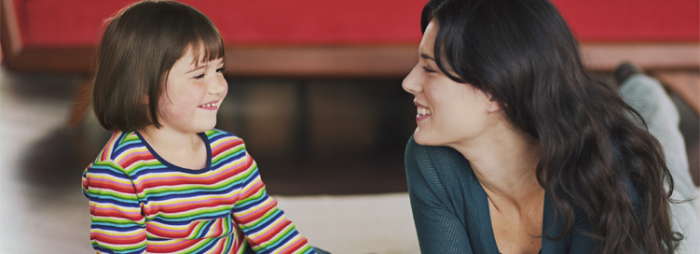Posted: June 2, 2015
Discussing the differences people have can be complicated enough, much less while trying to explain to children. Often adults tiptoe around the situation in order to avoid talking about it, choosing silence rather than a learning experience. The truth is discussing special needs can be a difficult topic, but one that is needed to be discussed in order for the next generation to be truly open to the world. To help advocates start a discussion the next time a child is curious, we put together a couple tips to make the conversation go a little easier.
First, when does a child start recognizing differences in others? According to PBS, “children between 2 and 5 start becoming aware of gender, race, ethnicity, and disabilities”. This is also the time where children become more curious and will start asking a lot of questions. It is important to encourage questions and not make the child feel like it is wrong to ask – silence only breeds continued curiosity on a topic that does not need to be a secret.
When a child does start asking questions, he or she might point out what the child (or adult) cannot do. This provides an opportunity to open the conversation of what that child can do, as well as similarities. It can go from the child saying “he can’t talk” to you saying “he can write to tell us what he is thinking,” etc. Focusing on what a child can do will help your curious child realize that an obstacle or difference does not define a person.
Another important thing is to emphasize that each child is unique. Pointing out to your child that every child is different and each one has something they struggle with helps humanize differences and similarities. Focusing on the similarities to show your child that he or she is more alike then different from the other child helps bridge gaps and eliminates stigma from a special need. Further, it may help with explaining adaptive equipment, technology and more.
The most crucial element is to lead by example. Parents can, and should, model acceptance through inclusion. If you aren’t accepting people that have differences, how can you expect your child too? Show your child that you aren’t afraid to interact with someone that may be different, while also being aware of the language you use to describe dislikes or differences. If they see this, children have a better chance at being less intimidated and more accepting.
It can be nerve-racking and overwhelming once your child starts asking questions about differences they see in other people. Social awkwardness is an awful thing, but is a small price to pay to provide your child a learning opportunity that will mold them moving forward. You may feel the need to avoid it, but it’s important to talk about special needs or differences, while also leading by example.
We hope these tips serve at least as a starting point the next time you have to talk about differences with your child and hopefully it will be easier. For more information on discussing with your child ideas of strengths and weaknesses, check out this awesome article. If you have any suggestions that you could add to this topic, please submit them through a comment!
If you have any questions about Cerebral Palsy, or would like to learn more about communicating to children about differences, call us at (800) 692-4453![]() (800) 692-4453 FREE or fill out our contact forms on Facebook or on our website.
(800) 692-4453 FREE or fill out our contact forms on Facebook or on our website.






